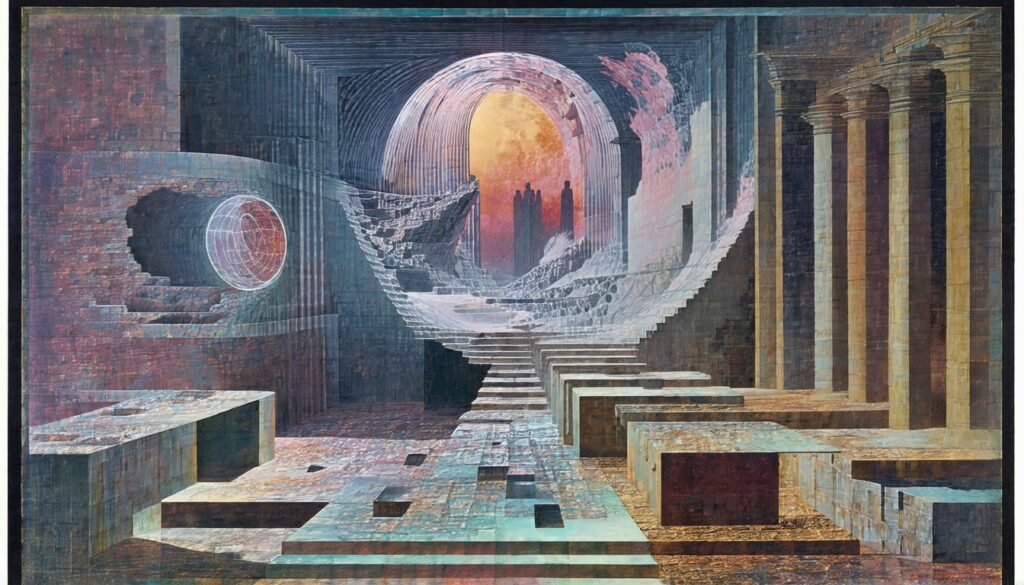The moving images that captivate audiences worldwide—on television, in movies, and across digital platforms—trace their origins back to an often-overlooked Belgian physicist: Joseph Antoine Ferdinand Plateau. Plateau is celebrated as a pioneer of optical illusions and one of the formative minds behind animation. His inventive spirit and scientific rigor in the 19th century laid the groundwork for the entire field of motion pictures, blending art, psychology, and engineering in ways that continue to reverberate through modern culture.
The Making of a Scientific Innovator
Born in Brussels in 1801, Joseph Plateau was surrounded by art and science from an early age. His father was a respected painter, a fact that may have subtly influenced Plateau’s enduring fascination with vision and perception. Despite facing hardship—losing both parents in his teens and later suffering vision loss himself—Plateau’s determination fueled a groundbreaking scientific career.
After obtaining a doctorate in physical and mathematical sciences from the University of Liège, Plateau focused his research on how the human eye perceives motion and light. One of his earliest contributions explored “persistence of vision,” the optical phenomenon where images linger in the human mind for a fraction of a second after being viewed.
Persistence of Vision: The Foundation of Animation
The theory of persistence of vision formed the cornerstone of Plateau’s most significant work. He reasoned that, by rapidly displaying a sequence of static images, one could create the illusion of continuous movement. This concept would not only fascinate the scientific community of his time but also pave the way for the invention of animated motion pictures decades later.
“Plateau’s insights into persistence of vision transformed our understanding of human perception and directly influenced the earliest experiments in cinema.”
— Dr. Charlotte van den Berg, Historian of Science
The Phenakistiscope: Spinning Science into Art
In 1832, Plateau introduced a revolutionary device he called the phenakistiscope. This ingenious instrument consisted of a spinning disc mounted with sequential images, viewed through evenly spaced slits. When spun before a mirror, the images appeared to merge, giving the illusion of smooth, lifelike movement.
How the Phenakistiscope Worked
- Disc & Animation Frames: Each disc depicted a series of drawings, with each slight variation capturing a fraction of motion—much like the frames of today’s animated films.
- Viewing Mechanism: The viewer looked through the slits while spinning the disc, synchronizing the rate at which each image flashed before the eyes.
- Mirror Effect: When directed toward a mirror, the observer could watch their own animated sequence come to life.
This simple mechanism predated the zoetrope, praxinoscope, and ultimately the motion film projector. It established a crucial visual principle: rapid succession of still images can create sustained movement in the mind of the observer.
Impact and Spread Across Europe
Plateau’s invention quickly gained popularity among scientists, artists, and hobbyists throughout Europe. Notably, similar devices emerged around the same time—the English mathematician William George Horner’s zoetrope being especially significant. Still, Plateau is widely credited for detailing the roots of the effect and for his clarity in scientific documentation.
Scientific Legacy: Beyond Animation
While the phenakistiscope is Plateau’s most visible contribution, his impact extends deep into physics and mathematics. His research on visual phenomena, especially regarding color mixing and retinal fatigue, influenced later explorations in neurology and optics.
Plateaus in Physics and Mathematics
Beyond motion illusion, Plateau is known for studying the behavior of soap films and minimal surfaces—an area now called “Plateau’s problem.” His meticulous experiments with wireframes dipped in soapy water illuminated the mathematics of surfaces that minimize area, a topic still relevant in today’s material science and architecture.
Enduring Influence in Interdisciplinary Fields
Plateau’s work bridged multiple disciplines:
- Vision Science: Unraveling how the eye processes complex stimuli
- Mathematics: Laying foundations for geometric analysis
- Art & Animation: Inspiring generations of visual storytellers
Challenges and Triumphs in Plateau’s Career
It is impossible to examine Plateau’s career without mentioning the remarkable adversity he faced. In the 1840s, he gradually lost his sight—an outcome most likely linked to an early optical experiment in which he stared directly at the sun for an extended period. Rather than letting blindness halt his career, Plateau pressed forward and continued his mathematical and theoretical studies.
His determination represented not just personal tenacity but also a commitment to scientific progress beyond physical limitation.
“Plateau’s resolve in the face of blindness remains a powerful example for innovators in any field—proof that intellectual vision often outlives physical sight.”
— Dr. Bruno Dumont, Professor of Physics
Modern Relevance: Plateau’s Enduring Impact
From the mechanics of cinema to smartphone screen refresh rates and digital animation, the principles Plateau codified remain central. Today’s animators, software engineers, and neuroscientists refer to “Plateau’s effect” when discussing frame rates and motion perception.
From the Phenakistiscope to Pixar
Consider the technology chain: The logic behind the phenakistiscope evolved into more complex optical toys; these inspired early cinema gadgets like the zoetrope and praxinoscope; finally, they gave way to film projectors, video displays, and CGI-based animation.
Contemporary studios such as Pixar and DreamWorks, for instance, continue to craft narratives that depend on these foundational ideas—displaying tens of thousands of still “frames” per minute to create seamless motion, a direct descendant of Plateau’s nineteenth-century experiments.
Recognizing Plateau’s Contributions
Though Joseph Plateau may not be as instantly recognizable as the Lumière brothers or Edison, greater appreciation has emerged in recent decades. In 2019, the search giant Google celebrated his 218th birthday with a globally viewed animated Doodle—bringing his once-niche story to millions.
Moreover, animation festivals and scientific societies often reference Plateau in awards and lectureships, keeping his memory alive at the intersection of science and the arts.
Conclusion: Plateau’s Vision, Today and Tomorrow
Joseph Antoine Ferdinand Plateau’s inventive genius irrevocably changed the way humans experience moving images. Through the study of persistence of vision, the creation of the phenakistiscope, and his broader work in optics, Plateau established the methodological and technological basis for modern animation and visual effects. His multidisciplinary legacy continues to inform research and creativity across the globe, reminding us that scientific inquiry and artistic expression are often two sides of the same coin.
As digital technology accelerates and new forms of visual storytelling emerge, Plateau’s foundational principles remain as relevant as ever, inspiring both scientists and artists to explore the boundaries of perception.
FAQs
What was Joseph Plateau’s most significant invention?
Joseph Plateau’s most important invention was the phenakistiscope, a device that used spinning disks and illustrated frames to create the first moving images, laying the groundwork for animation and motion pictures.
How did Joseph Plateau lose his eyesight?
Plateau lost his eyesight likely due to retinal damage caused by experimenting with visual phenomena, including attempting to look at the sun for prolonged periods during a study of optical effects.

Why is Plateau’s work relevant to modern animation?
Plateau’s theory of persistence of vision underpins the way animated films, television, and digital media create the illusion of motion. Modern frame rates and animation techniques still rely on the concepts he developed.
What is “Plateau’s problem” in mathematics?
“Plateau’s problem” refers to finding the minimal surface with a given boundary, inspired by Plateau’s experiments with soap films. This problem remains a topic of research in geometry and physics today.
Did Joseph Plateau receive recognition during his lifetime?
Although not as widely recognized as some contemporaries, Plateau was honored in scientific communities and was made a member of the Royal Academy of Belgium. His scientific work gained broader acknowledgment in the years following his major inventions.
Are there direct links between Plateau’s work and modern visual technologies?
Yes; the principles behind the phenakistiscope evolved directly into technologies used in film, television, computer graphics, and even the design of digital screens, all of which depend on manipulating how humans perceive sequences of images.


